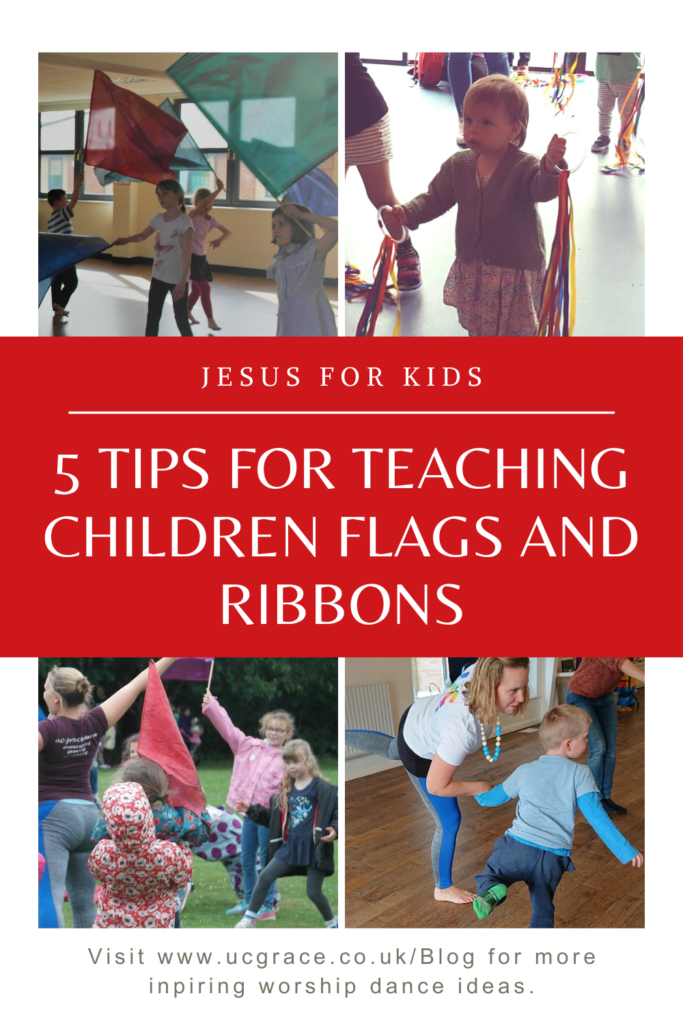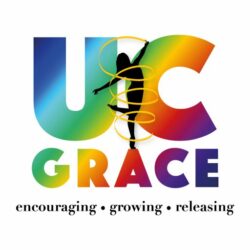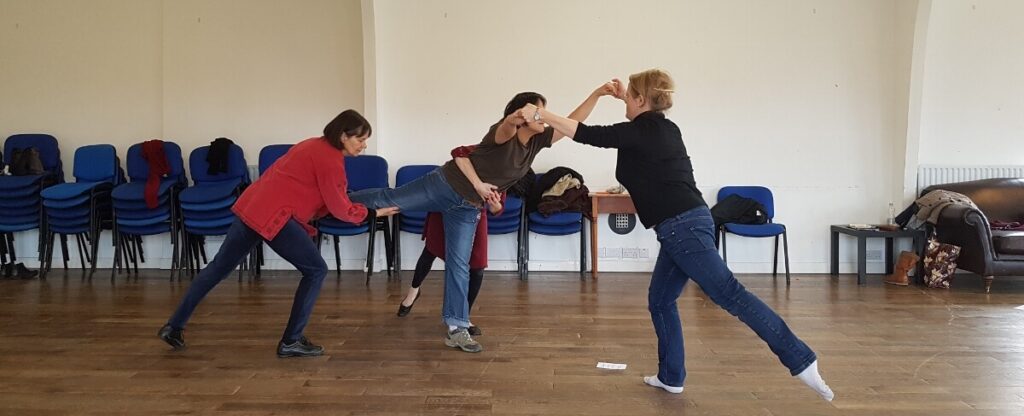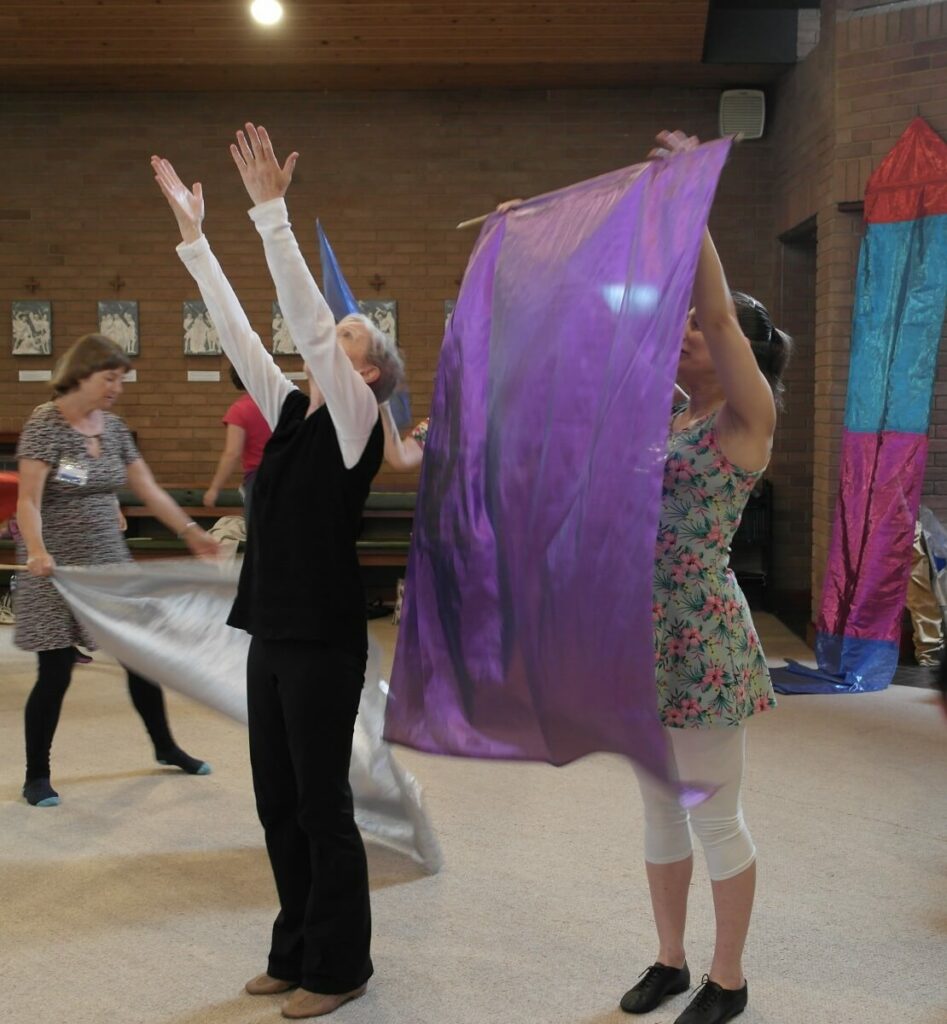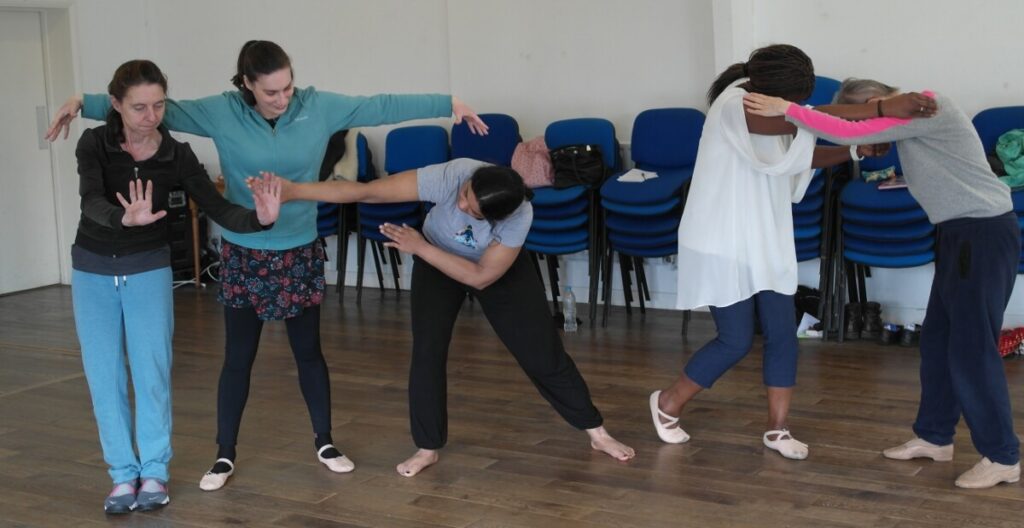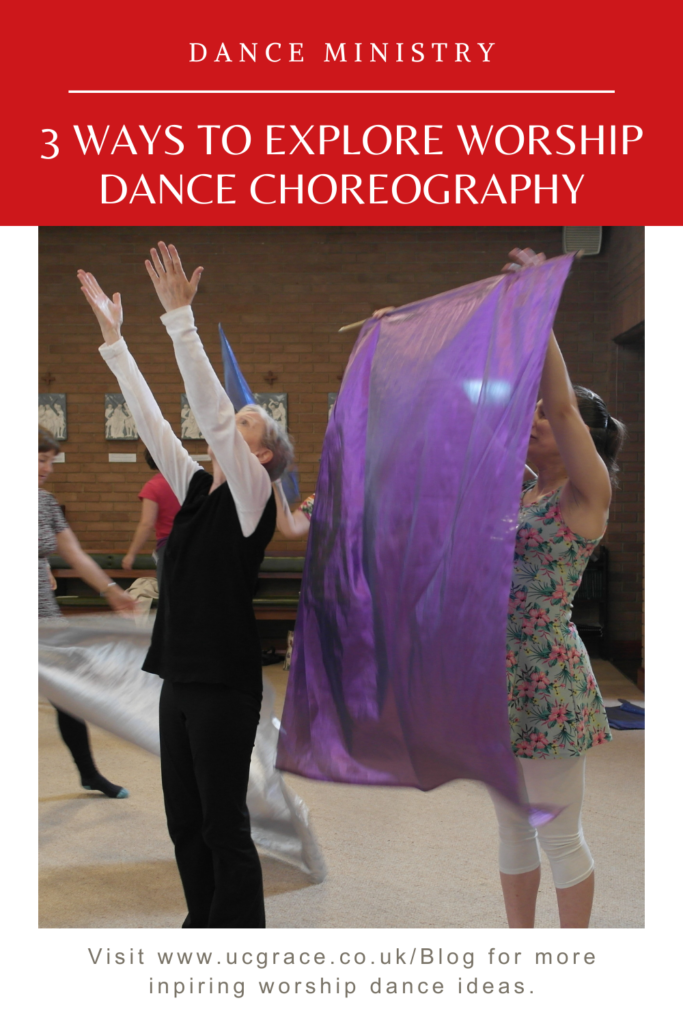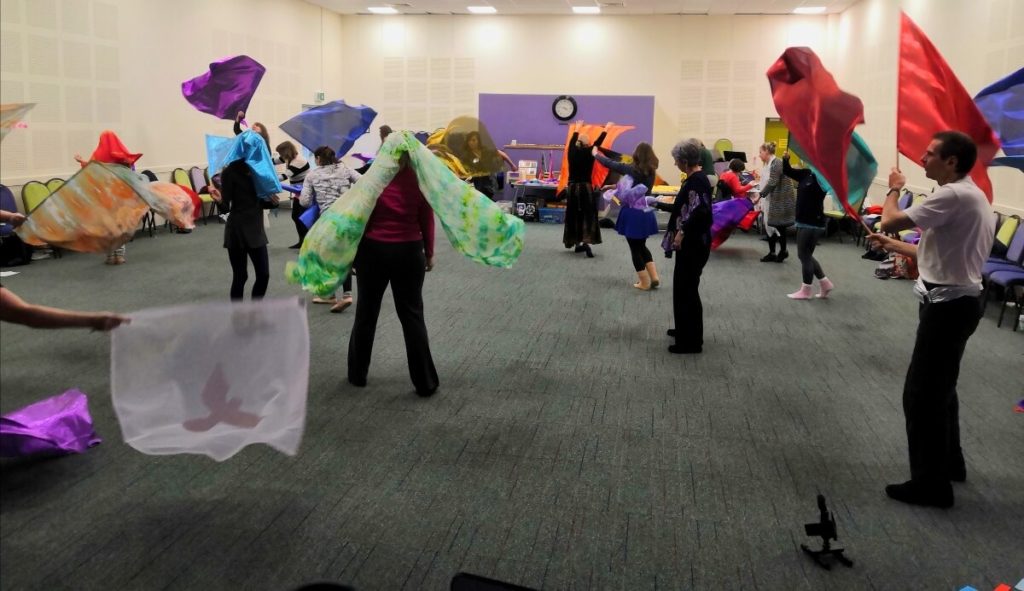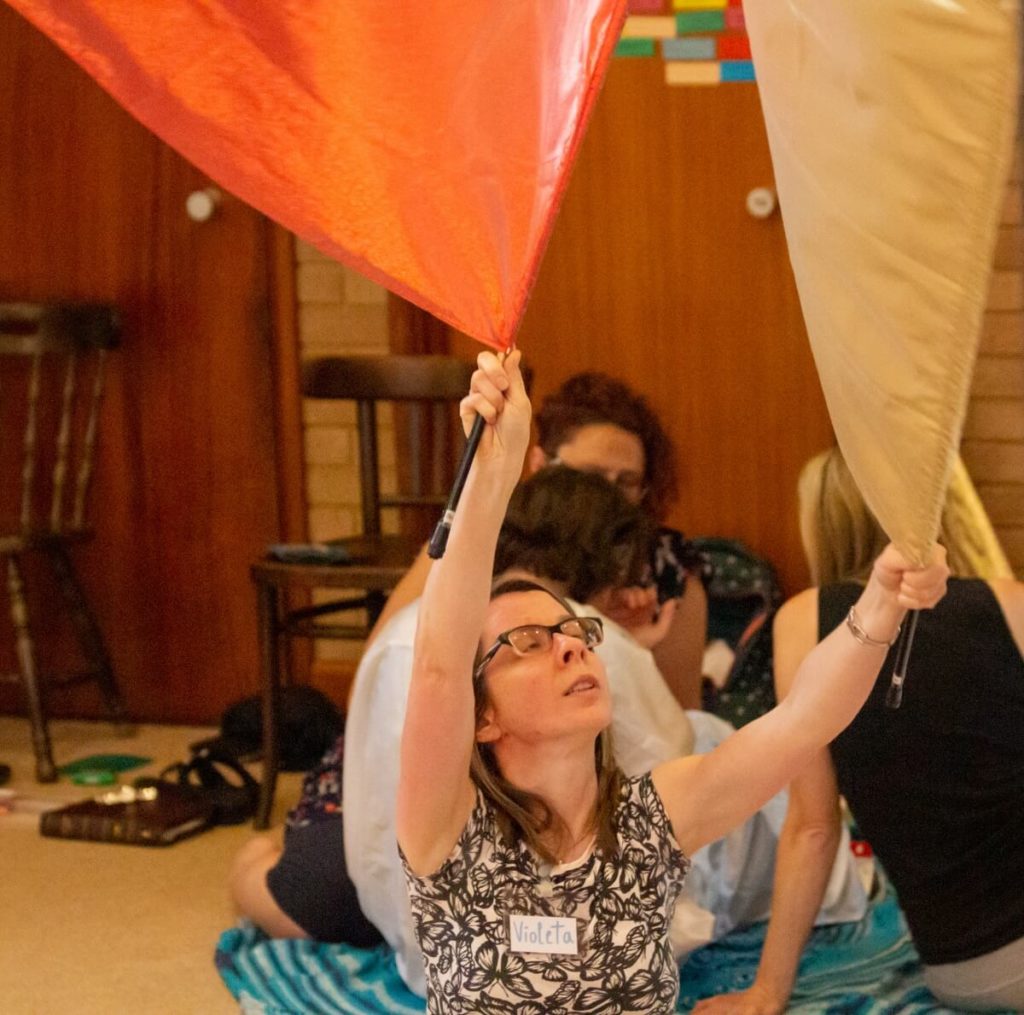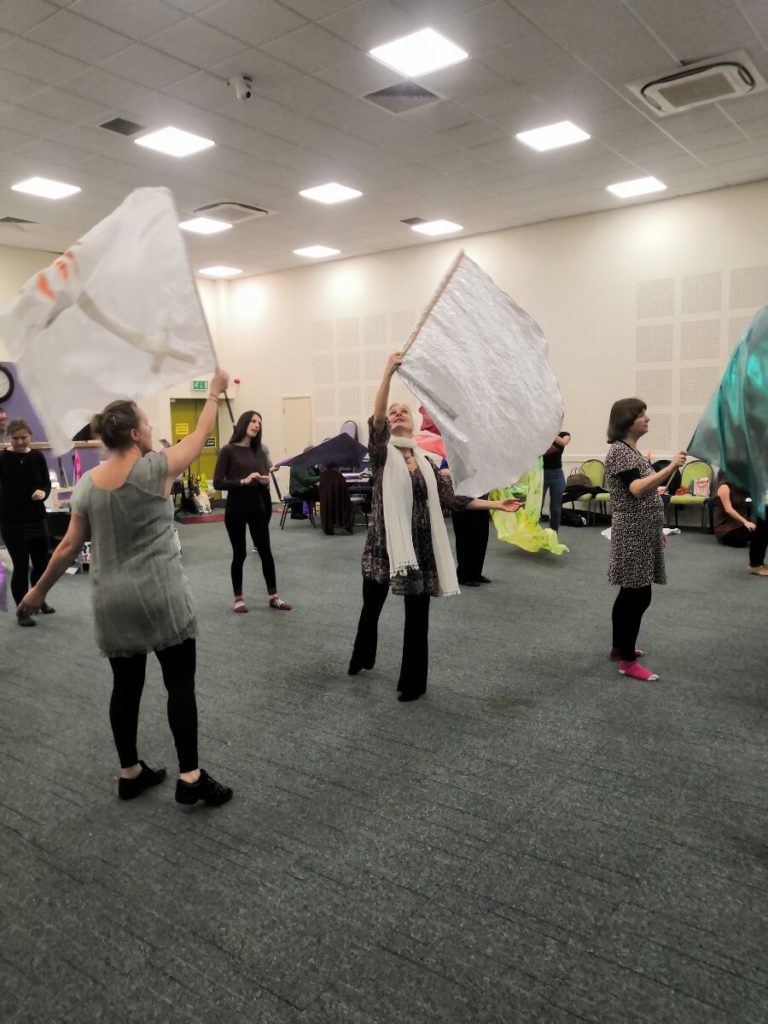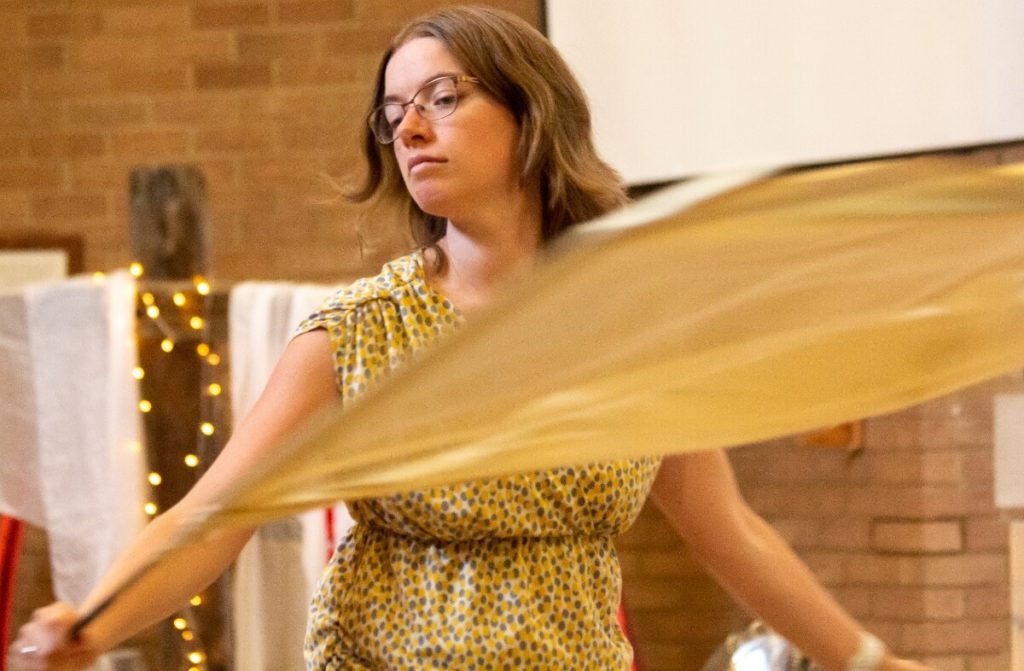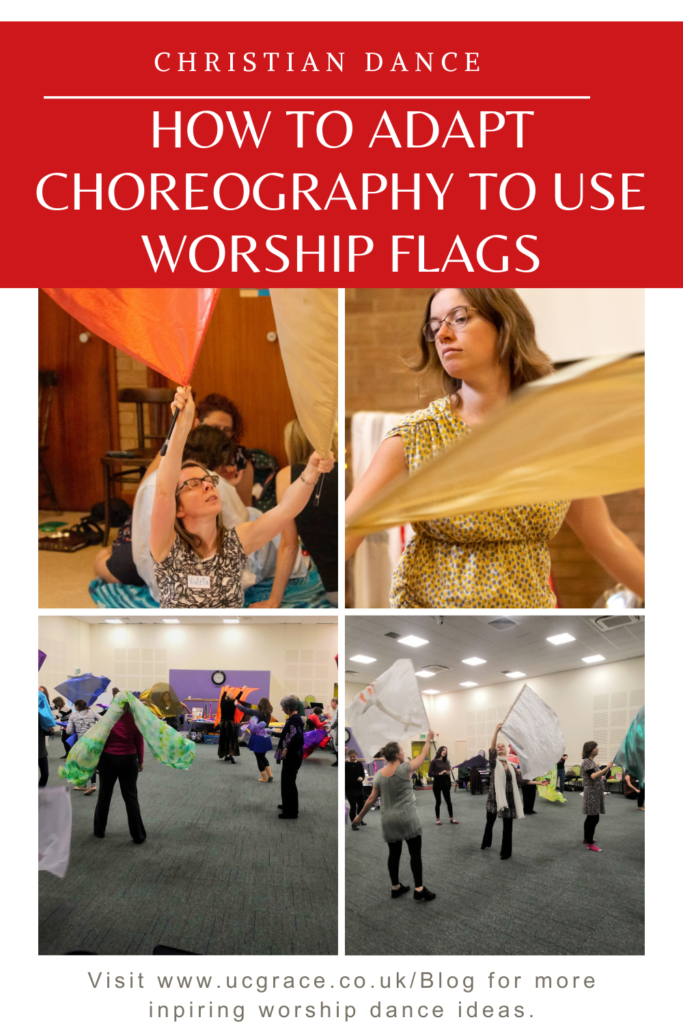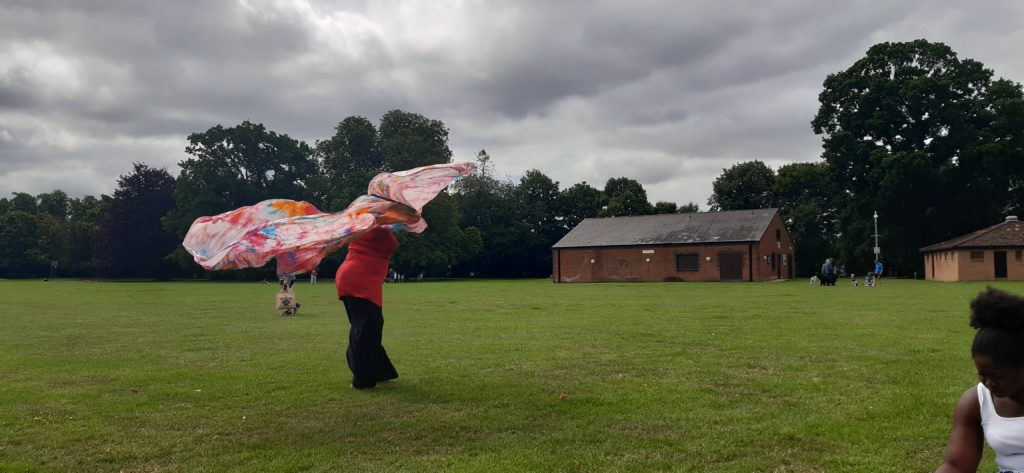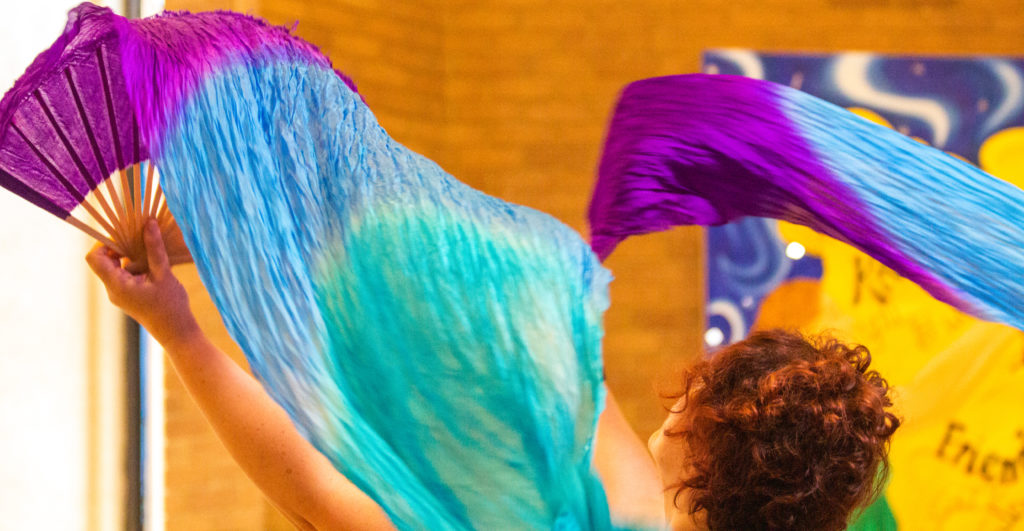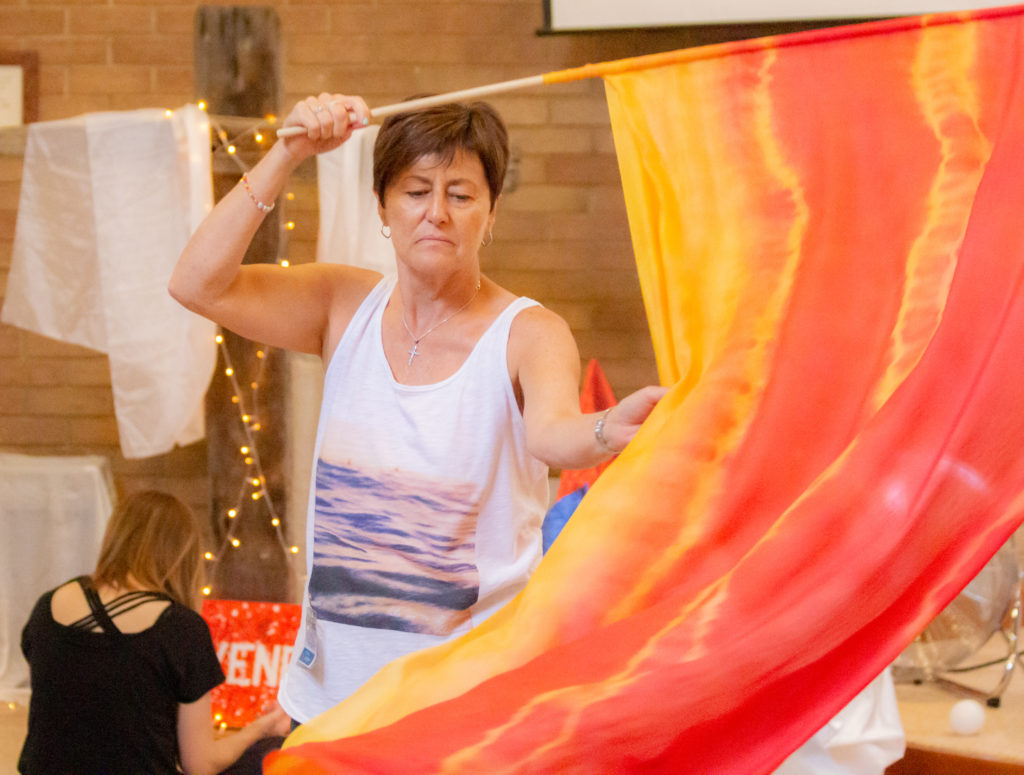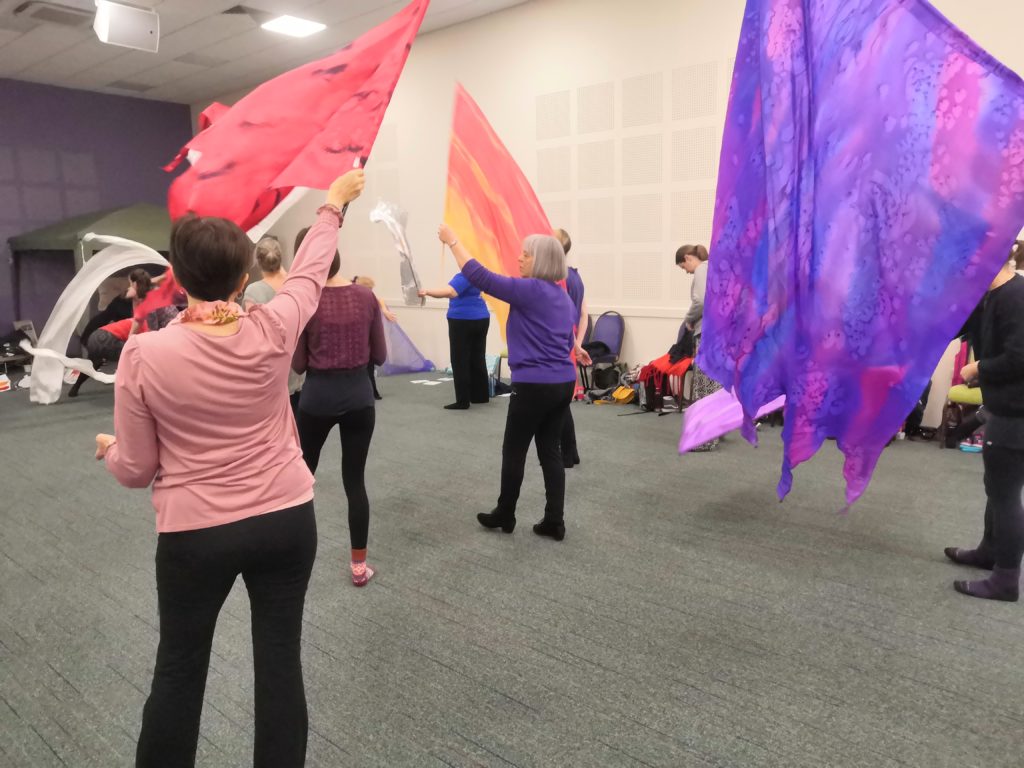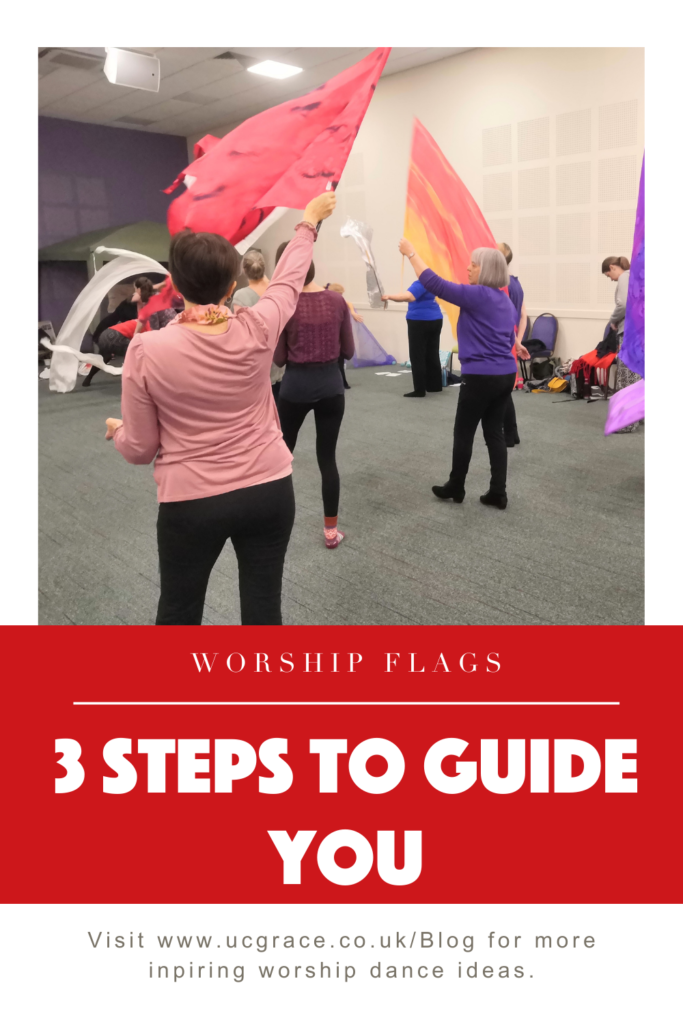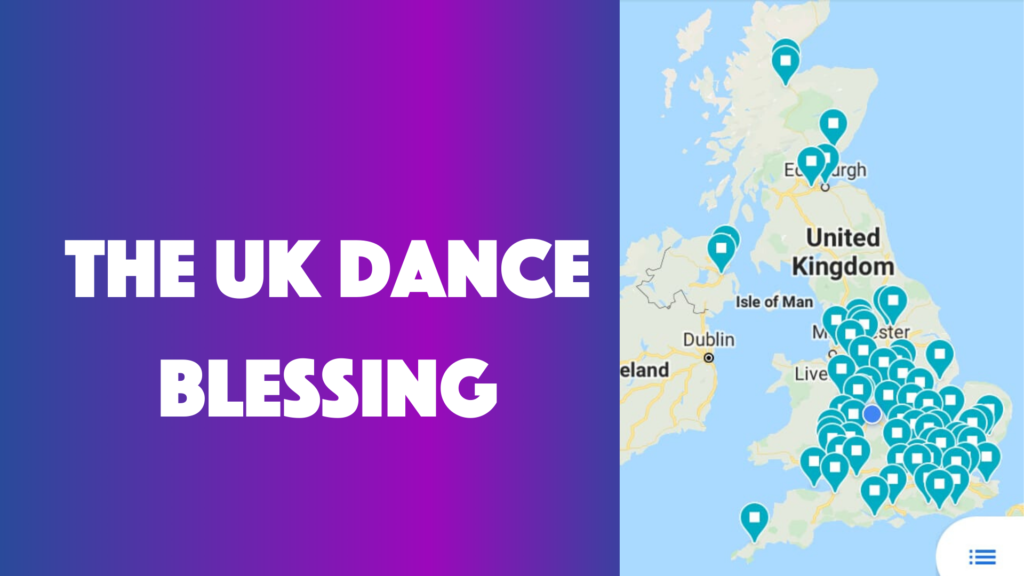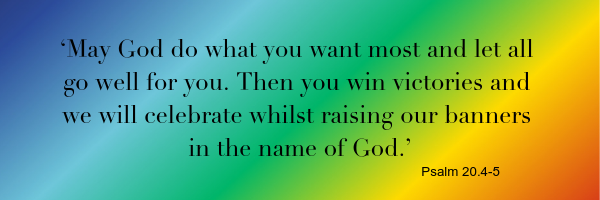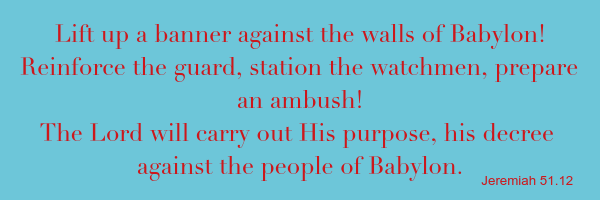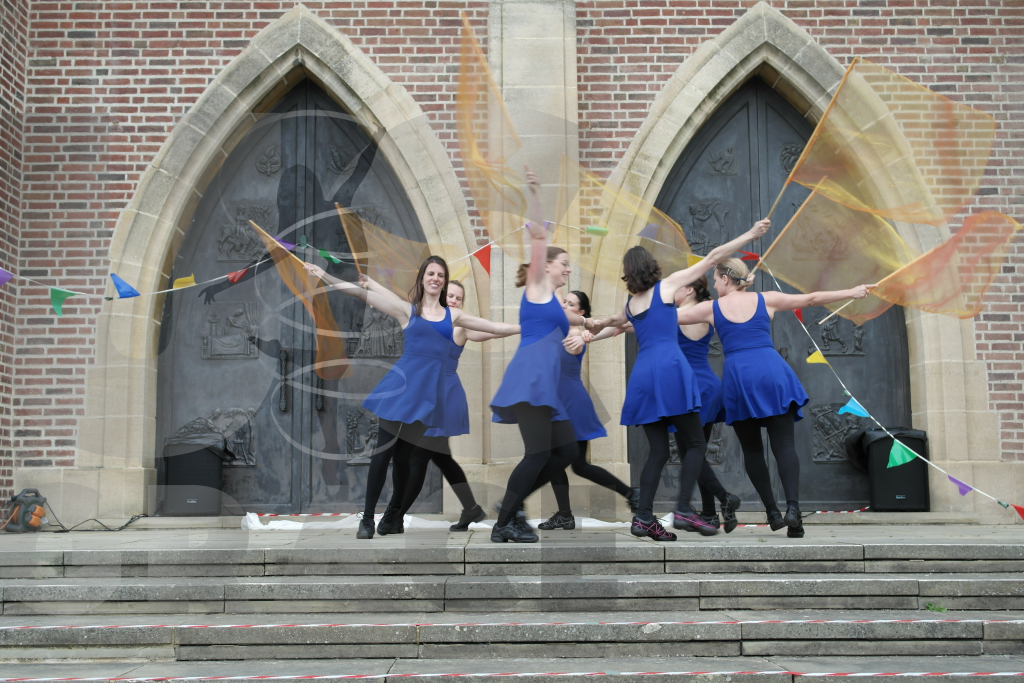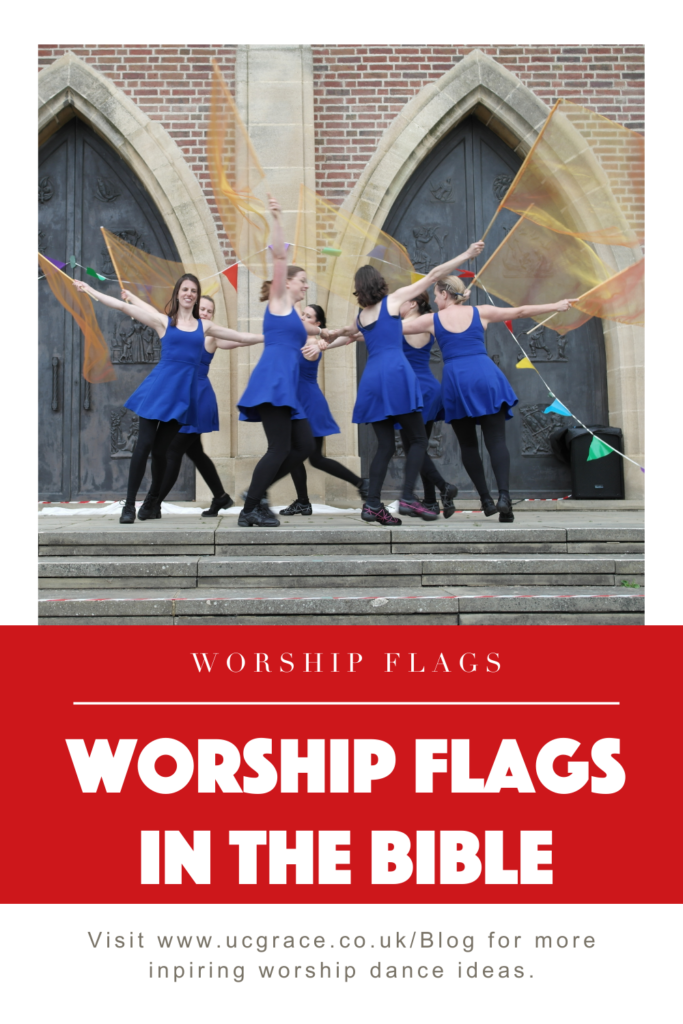One thing I am passionate about is passing on the joy of moving and dancing with flags and ribbons to children. However, I am keen that they understand scriptural references and know that they are choosing to pick up a vehicle that can be used to talk to God, to communicate, worship and share their heart. In this blog post you’ll find 5 top tips for teaching flags and ribbons as part of Children’s worship.
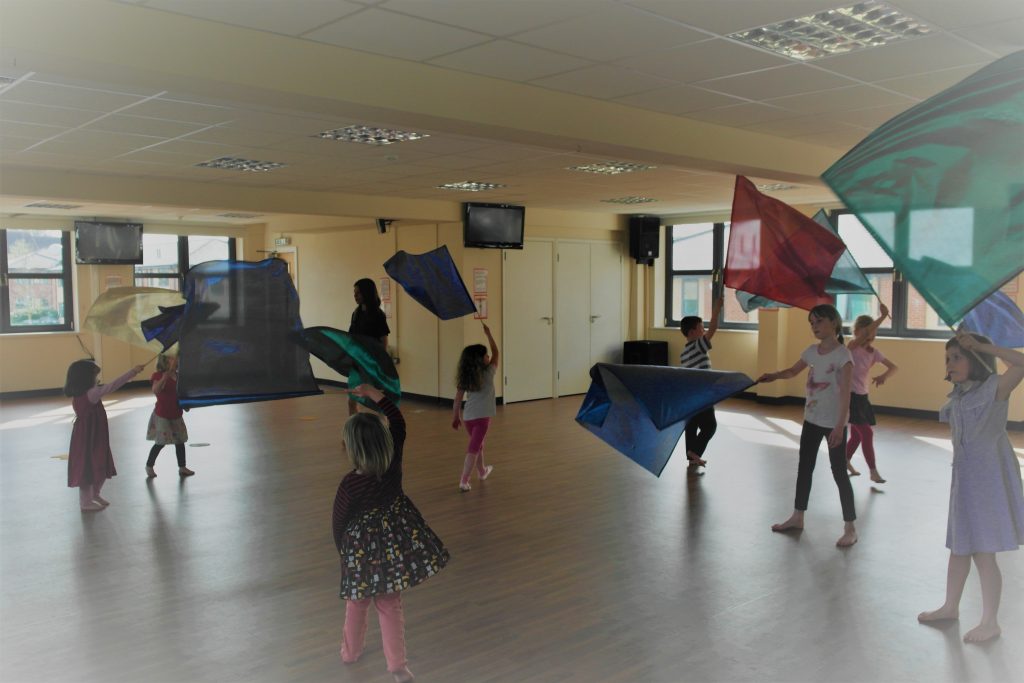
How does using dance and movement with children encourage them on their walk with God?
From a wide-angle perspective dance encourages growth of self-esteem, beliefs, accomplishments and other skills. It also releases children to live their life in a way that they want too and will be of value to them. However, if you zoom in, dance and movement provide a safe space for children to learn to channel their emotions and communicate to God when words maybe difficult. Additionally, it also provides opportunity for children to learn the Bible, resulting in the ability to put movement and actions to words, helping with memory verse remembrance and themes and topics in the Bible.
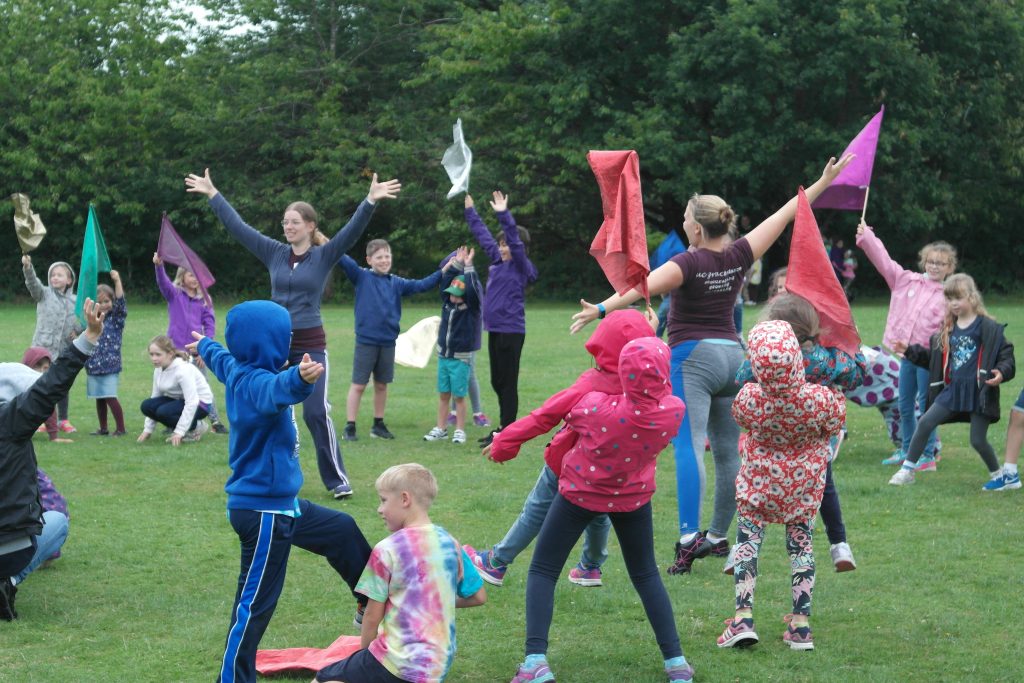
Please recognise that you will have your own unique way of teaching – because God made you that way! So, what I put forward are simply suggestions, they are things that I have learnt along the way and have found helpful when teaching children’s worship in particular.
There is too much to say all in this post, so make sure you check out my post about What the Bible says about Flags and Banners to help with any background information you may want to know.
Here are my top 5 tips for teaching flags and ribbons for children’s worship specifically:
1. Have clear intentions and boundaries
Boundaries – However well you know the children you will need clear boundaries in place. These include things like, the flag stays rolled whilst you’re teaching or talking. You put your hand up and count back from 5 when you want the children to be still. They sit down or put their flag down when you’re talking. You make it clear what happens if they continually don’t listen. They understand their dance space and where they can go when they move.
Intentions – This is about letting parents and children know what they are going to be doing during the session. Depending on the context of your workshop or class, this is important. Although it might seem obvious, you will need to say they will be worshipping, praying, reading the Bible and dancing for Jesus. If it’s not a ‘normal’ event i.e. church, Sunday school etc. But more like a youth club, holiday club, you may have some unchurched children there (awesome), we just need to still be respectful of their back ground.
2. The more help you have the better
No brainer with children! When ever you think you have enough you don’t! Regardless of how well behaved you think your children are, they will use a flag as a sword or poke someone on purpose. It’s new and exciting. So it’s best to accept it will happen rather than consider it won’t!
Due to this, extra hands are your best friend as they can help police what the children are doing with the resources. Helpers are also useful when you are teaching, they can dot them selves amongst the children. So, even if the children can’t see you, they can watch a helper (provided you’ve primed the helpers with what you are doing!). Should you split into group work, helpers can assist those groups and children that might be finding the task hard.
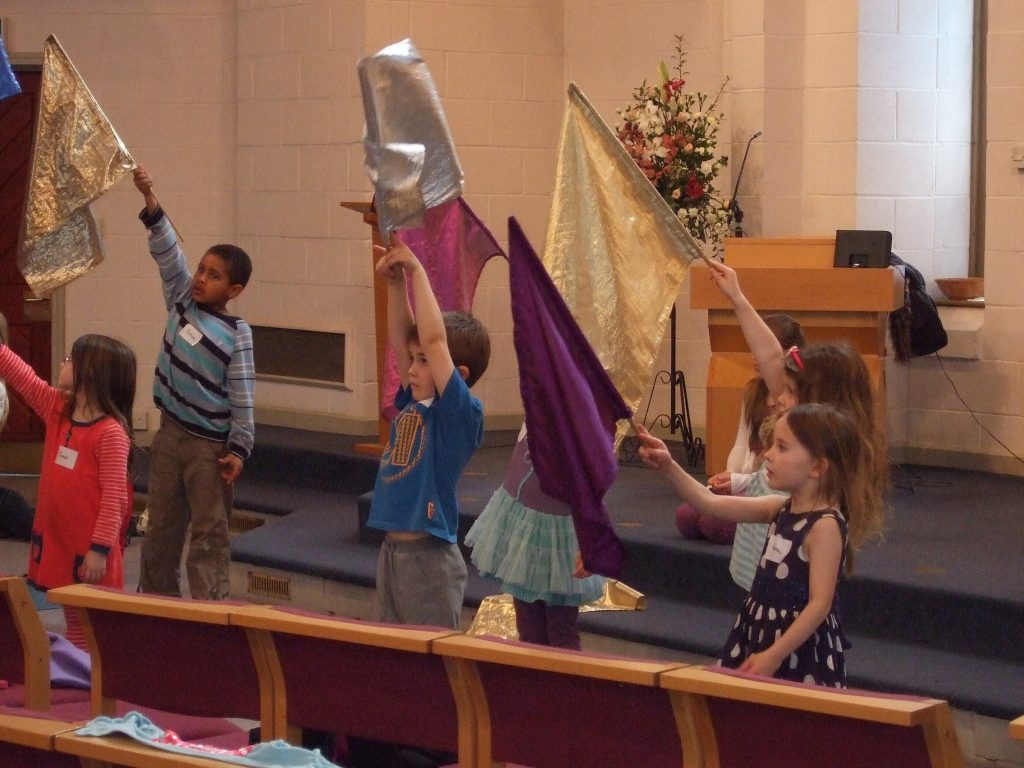
3. Restrict numbers for some children’s worship workshops
It sounds quite harsh doesn’t it? But honestly, when you are teaching flags and ribbons you don’t want a packed hall. Not only will you have to fight above the noise to capture attention and teach safely. But the children won’t be able to enjoy the full effect of moving and dancing with a flag or ribbon if they don’t have the space within which to do it.
If you do have to do a big group, my suggestion would be to split the group in two when ever it comes to actively moving as a smaller group can access the space more effectively.
Therefore, when planning your numbers think in realistic terms about how many bodies you can get in your space to effectively delivery an excellent children’s worship workshop.
4. Demonstrate, teach, practise, repeat in chunks
Chunking is something that I will talk about in another post. But essentially break down what ever you want to teach them into small sections and then do this:
Demonstrate – the children WATCH you do the movements
Teach – you TALK through and DO the movements with them
Practise – you go over what you have just done – with a partner or another helper
Repeat – constantly go back and re do what you have just done.
All children learn differently, all children learn at different paces. Doing it as above, will allow children who learn differently to still be able to access what you are doing.
5. Pick one song and memory verse they know.
With children, less is more. Don’t over plan. Pick something simple, that will allow them to be TAUGHT something and then allow them to CREATE something. That’s primarily why children love to dance and move with flags and ribbons. There is a freedom they don’t get in other activities.
Children also love to realise that they know the answers already. So, whatever song or scripture you pick try to ensure that it’s already used as part of the children’s worship in the groups or at school. Familiarity encourages children to bloom and will help breed confidence. If you’re asking questions about topics or themes they may already know this will do just that.
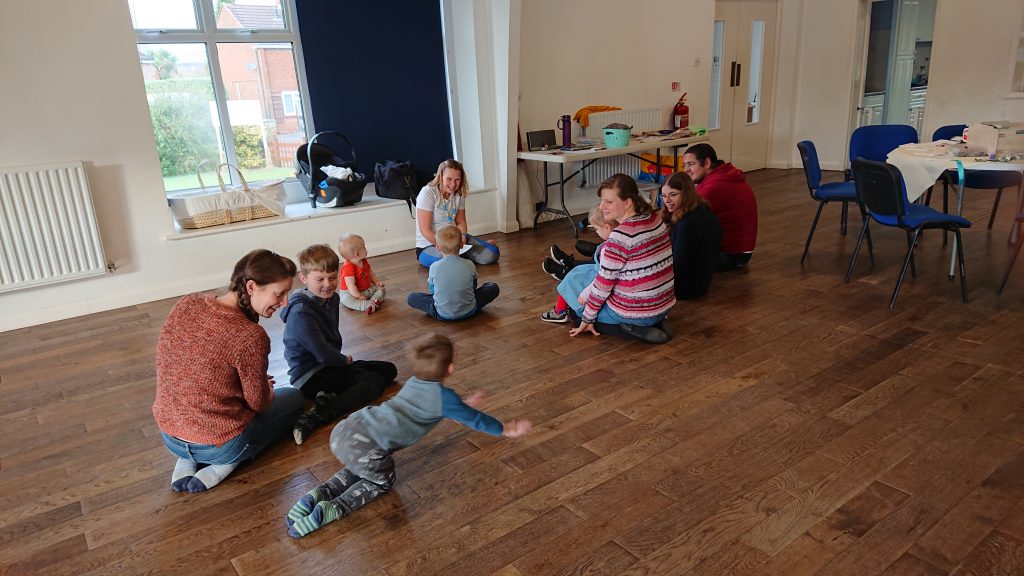
Let me know how you get on with any children’s worship workshops.
There will be more hints and tips on teaching children and why we should invest in them. So, make sure you check back regularly.
If you’ve got a heart to teach children but don’t feel you have the skills and confidence to move with flags and ribbons yourself, why not get in touch about running a training day at your church. You can get in touch with me here.
These blog posts might also be useful for you –
- 4 important things to teaching kids worship dance
- Dancing with ribbons
- 6 essentials when planning a dance worship workshop
- Prinith’s excitement at stepping out to teach children worship dance
If you want to be the first to heat about any teaching children’s worship resources I create. Head here and sign up.
